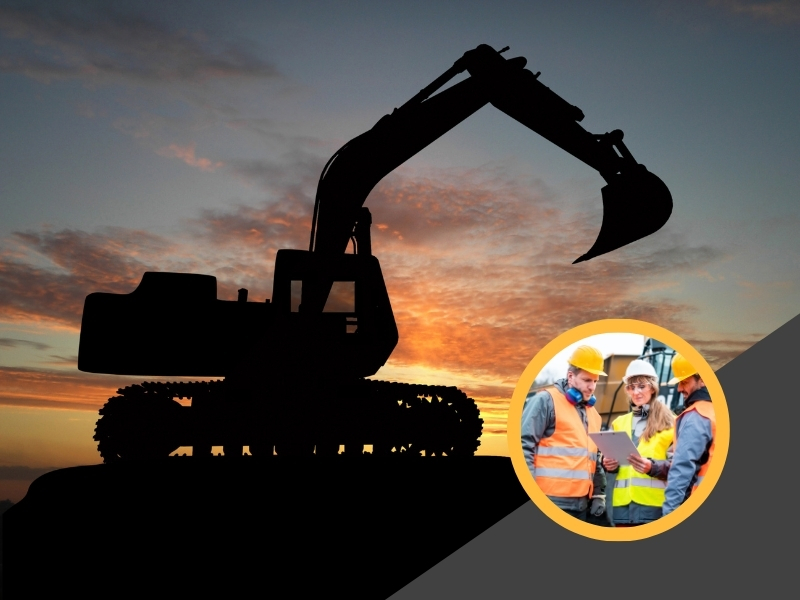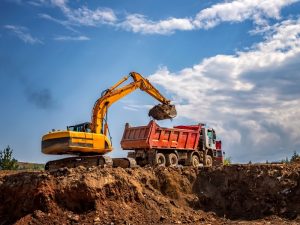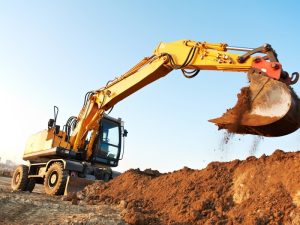Excavators are essential machines used on construction sites, and their safe operation is critical to preventing accidents, protecting operators, and ensuring compliance with Australian safety standards. With strict safety regulations in place, excavators must include specific excavator safety features to meet industry requirements. This article explores the excavator safety features that must be in place to stay compliant, prevent accidents, and protect both operators and equipment.
Why are excavator safety features important for compliance?
Excavators are potent machines used for digging, lifting, and moving materials, but without the proper safety features, they pose significant risks to workers and the public. In Australia, safety standards regulate excavator use to minimise accidents like rollovers, falling objects, and collisions. These features not only prevent accidents but ensure compliance with legal requirements. For construction businesses, adhering to these standards is crucial to avoid fines, accidents, and injuries while improving safety records.
What are the key excavator safety features required by industry standards?
Excavators must be equipped with essential safety features to meet industry standards and ensure safe operation on construction sites. These features help reduce accident risks and protect both operators and surrounding workers. Vital excavator safety features include:
- Rollover protection system (ROPS): This system protects the operator in case of a rollover by providing a reinforced structure around the compartment.
- Falling object protective structure (FOPS): Shields the operator from falling debris or materials.
- Operator restraint system (ORS): Secures the operator within the cabin, preventing ejection during sudden stops.
- Automatic load sensing systems: Prevent the excavator from exceeding its lifting capacity, reducing the risk of tipping.
- Warning lights and alarms: Alert operators and workers about potential hazards, such as malfunctions or dangerous operating conditions.
How do excavator safety features prevent accidents on construction sites?
Excavator safety features play a crucial role in mitigating physical hazards in the workplace, particularly on construction sites. These features help reduce the risk of serious incidents, such as injuries, equipment damage, and fatalities. Key safety features include:
- Rollover prevention: The ROPS system prevents machine rollover accidents, protecting the operator and nearby workers.
- Overhead protection: FOPS shields the operator from falling debris or dislodged objects.
- Collision detection: Proximity sensors and cameras alert operators to nearby objects or people, reducing collision risks.
- Load sensing systems: Prevent overloading and tipping.
- Enhanced visibility: Clear windows and 360-degree visibility improve situational awareness, reducing accidents involving people or equipment.
What excavator safety features are essential for operator protection?
Protecting the operator is a crucial priority for excavator safety. Excavators are large, heavy machines, and their proper operation is essential to avoid accidents. Key safety features designed for operator protection include:
- Seat belts and restraints: Secure fastening reduces the risk of ejection during sudden movements or accidents.
- Operator guardrails and doors: Prevents falls and protects against external hazards like flying debris.
- Cabs with rollover protection: ROPS-compliant cab structures safeguard the operator in case of a rollover.
- Cameras and sensors: Enhance situational awareness, reducing collision risks.
- Ergonomic seats: Improve comfort control and reduce operator fatigue for safer operation.
How do excavator protective measures help meet legal and regulatory requirements?
In Australia, strict regulations govern the operation of construction machinery, including excavators. These machines must be equipped with the required safety features to meet legal and regulatory standards. Some key ways these features help comply with regulations include:
- Compliance with Australian standards: Safety features like ROPS, FOPS, and operator restraints are mandatory.
- Workplace health and safety (WHS) compliance: Meeting safety standards helps businesses comply with WHS regulations, reducing legal risks.
- Certification for use on construction sites: Proper safety features ensure excavators are certified for use.
- Preventing accidents and liabilities: Safety features reduce the risk of accidents and legal claims.
What role do excavator protective measures play in preventing equipment damage?
Excavator safety features not only protect operators but also help prevent damage to the equipment, ensuring the machine stays in optimal condition. This is crucial for maintaining productivity and reducing repair costs. Key safety features that avoid damage to equipment include:
- Overload protection: Automatic load sensing systems prevent lifting beyond the machine’s capacity, reducing mechanical failure or tipping risks.
- Engine monitoring systems: These systems track engine performance, preventing overheating and oil pressure loss.
- Pressure relief valves: Protect hydraulic systems from overloads, reducing component damage.
- Proximity sensors: Help avoid collisions with equipment or structures, minimising repair costs.
How can excavator protective measures enhance overall site safety?
Excavator safety features not only protect the operator but also enhance overall construction site safety. By safely operating an excavator, the risk of accidents affecting workers and bystanders is significantly reduced. Key safety features that improve site safety include:
- Increased awareness: Cameras, sensors, and alarms help operators stay aware of their surroundings, reducing accidents involving other workers.
- Explicit signalling: Warning lights and alarms alert workers when the excavator is in operation, preventing accidental collisions.
- Reduced downtime: Safety features maintain operational efficiency, preventing accidents and damage.
- Better coordination: Enhanced visibility and communication systems improve coordination with other machinery, promoting a safer work environment.
What are the benefits of proper training in excavator protective measures?
While having the right safety features is crucial, proper training is equally essential to ensure operators use them effectively. Excavator safety training offers several benefits, including:
- Improved operator awareness: Operators learn the purpose and importance of safety features, ensuring correct usage.
- Reduced risk of human error: Proper training decreases mistakes that can lead to accidents or equipment damage.
- Compliance with safety standards: Trained operators ensure adherence to Australian safety regulations.
- Increased productivity: Well-trained operators improve efficiency, leading to smoother and safer operations.
Prioritising Excavator Safety for a Safer Worksite
Equipping excavators with essential safety features goes beyond legal requirements—it protects operators, reduces risks, and ensures a safe site. Prioritising safety features helps prevent accidents, safeguard machinery, and improve site safety. Trained operators better understand safety features, avoid hazards, and comply with regulations. Proper excavator operator training reduces human error, boosts productivity, and enhances site safety, creating a more efficient and secure construction environment.
At SafeZone Training, we offer practical, hands-on workplace safety courses led by nationally recognised experts. Our immersive learning environment equips participants with essential skills for success. With expert trainers and state-of-the-art facilities, we deliver high-quality, affordable safety training to prevent accidents and save lives. Trust SafeZone Training to help you secure a safer tomorrow.



